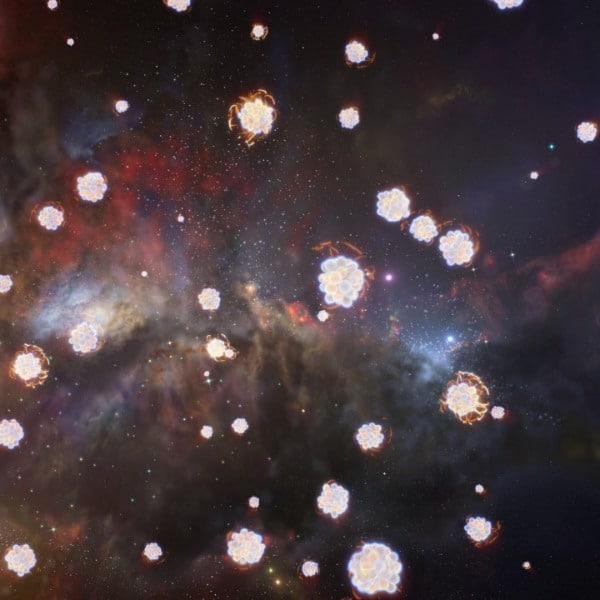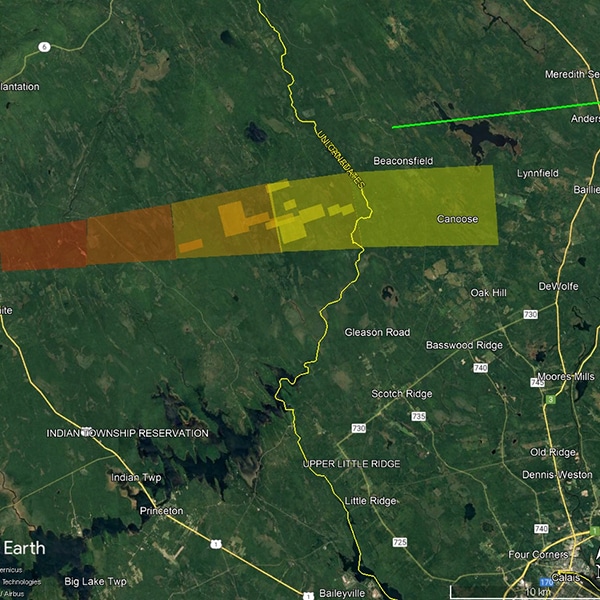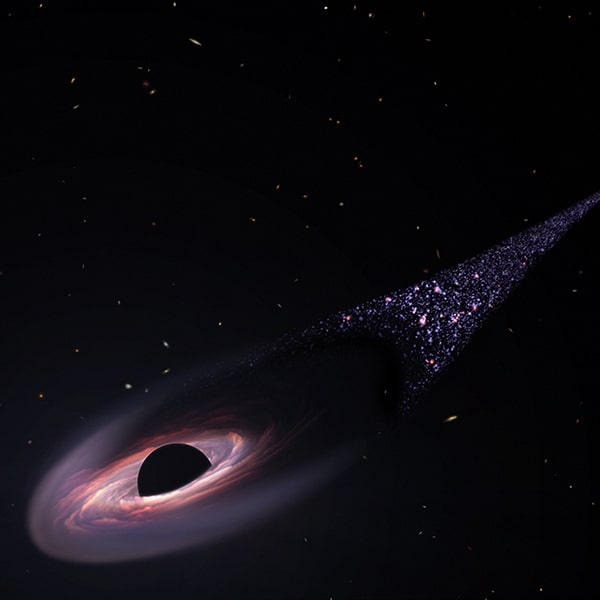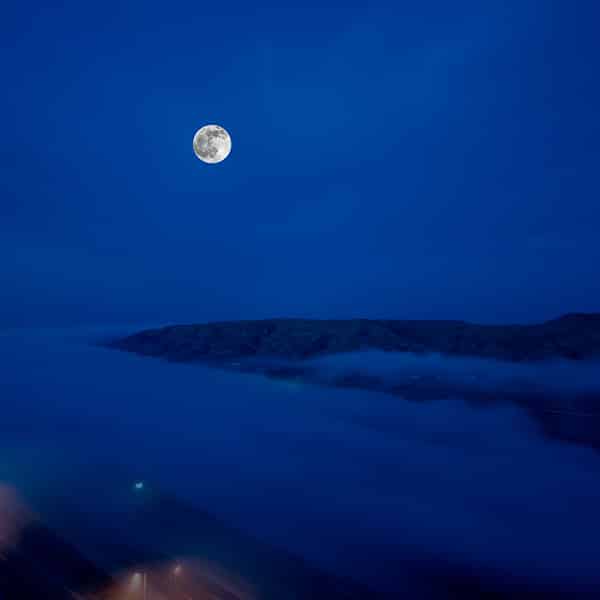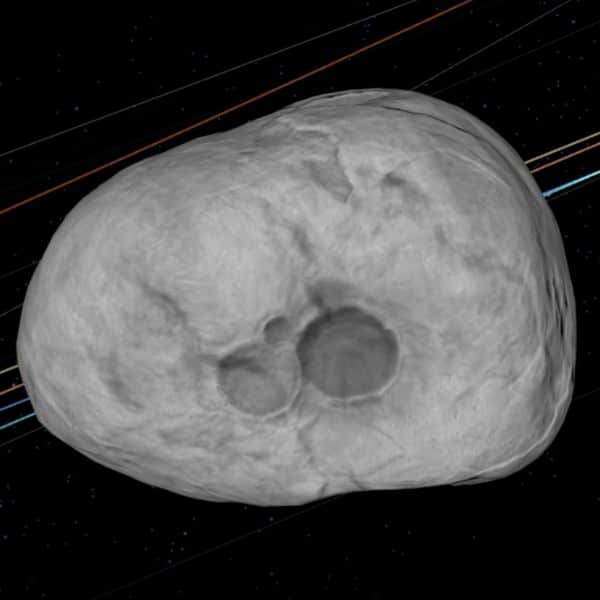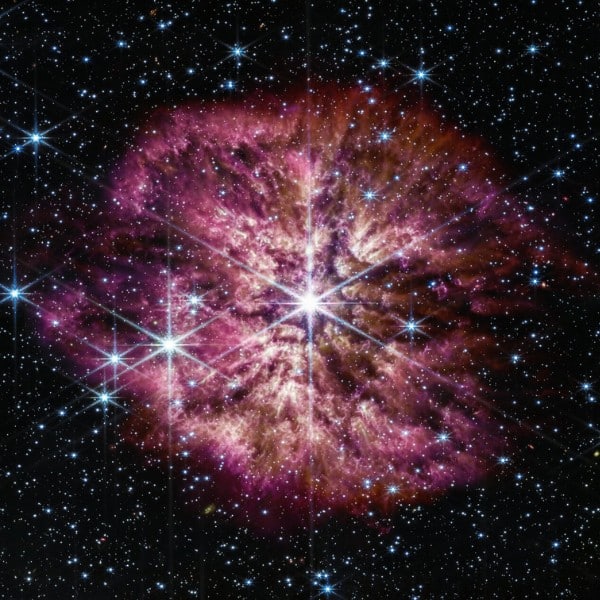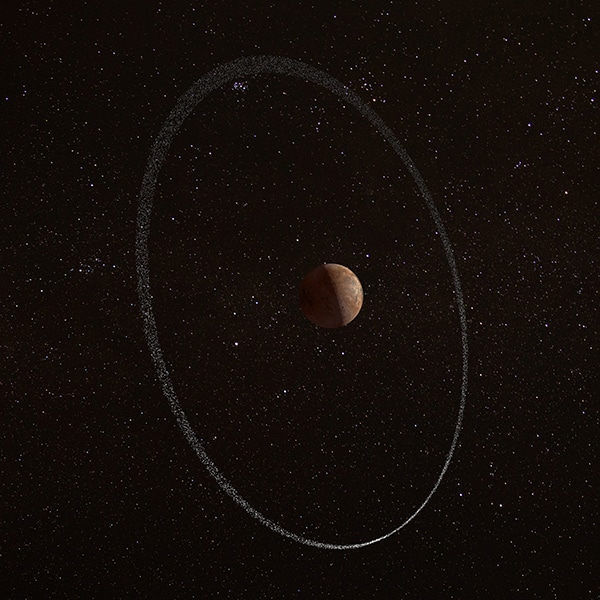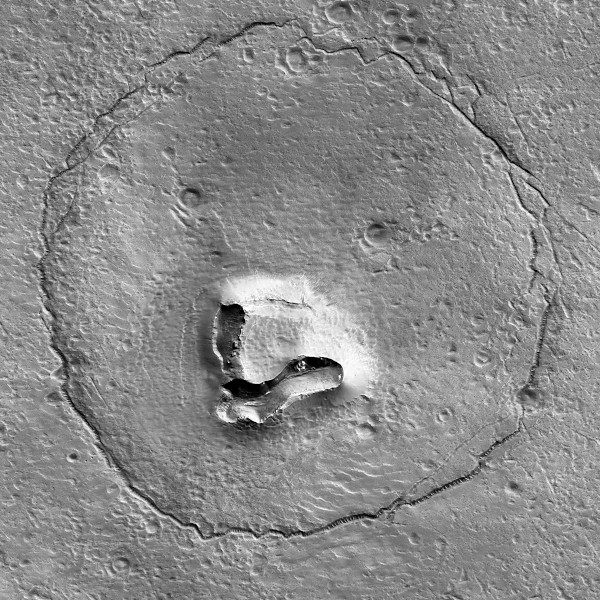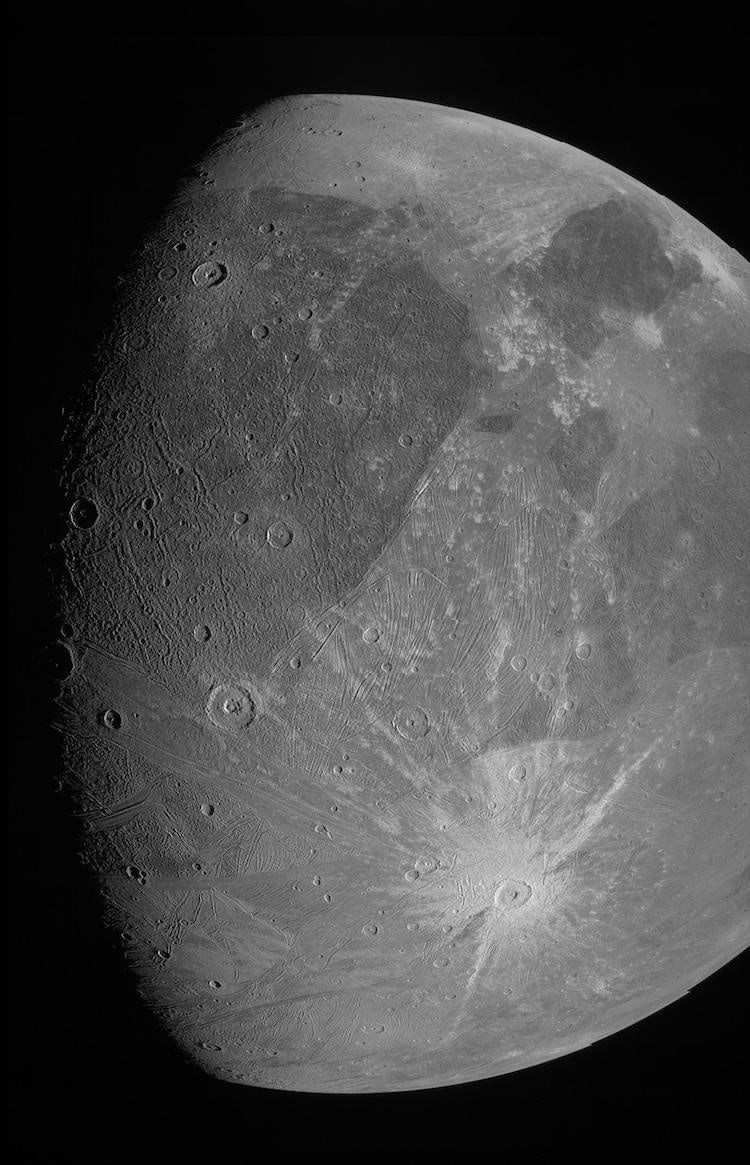
Ganymede Close Up (Photo: NASA/JPL-Caltech/SwRI/MSSS)
It's incredible that we live in an age where we can actually see and hear what's happening on different planets. As various NASA missions send data back to Earth, the agency publishes it for the public to enjoy. The latest information comes courtesy of Juno, NASA's space probe that is exploring Jupiter. While it's constantly sending back images of the gas giant, new audio from Jupiter's moon Ganymede has just come to light.
The nearly minute-long clip from Ganymede actually sounds like an experimental synth track. Collected in early-June 2021, it's thrilling to hear how animated the sound is. The audio was collected by Juno's Waves Instrument, which dials into electric and magnetic radio waves produced in Jupiter’s magnetosphere and collects data on those emissions. It almost sounds like crickets are putting on a symphony with electronics in the background, but if you were actually to set foot on Ganymede, don't be fooled into thinking that this is what you would hear. In order to create the audio, researchers shift the frequencies collected by Waves to the audio range in order to produce an audible track.
“This soundtrack is just wild enough to make you feel as if you were riding along as Juno sails past Ganymede for the first time in more than two decades,” said Juno Principal Investigator Scott Bolton of the Southwest Research Institute in San Antonio. “If you listen closely, you can hear the abrupt change to higher frequencies around the midpoint of the recording, which represents entry into a different region in Ganymede's magnetosphere.”
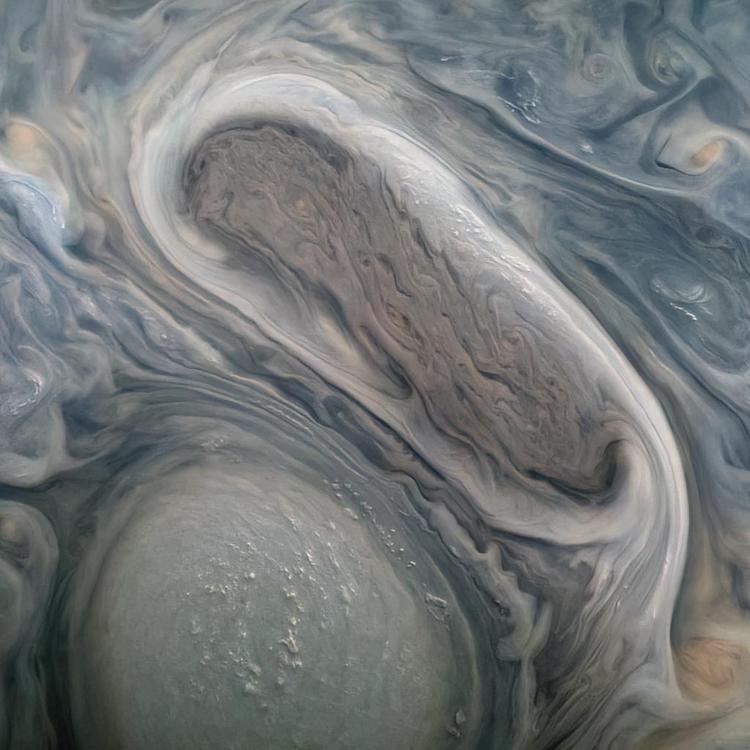
Two of Jupiter's Storm Clouds. (Photo: NASA/JPL-Caltech/SwRI/MSSS; Image processing: Kevin M. Gill)
This otherworldly soundtrack is just part of a larger Juno data dump. During a December 17 briefing, NASA also released stunning new images of Jupiter and Ganymede. A close-up photo of Jupiter's largest moon shows the rich detail of its mottled surface. Another highlight is the artistic photo of Jupiter's large rotating storms. Captured on November 29, 2021, the photo shows the drama of these storms.
Another interesting development shared by researchers is a comparison between Jupiter's violent storms and a phytoplankton bloom in the Norwegian Sea. The comparison was prompted by Lia Siegelman, a physical oceanographer and postdoctoral fellow at Scripps Institution of Oceanography at the University of California, San Diego. She'd noticed that cyclones at Jupiter's pole looked quite similar to ocean vortices that she's studied as a doctoral student and decided to take a closer look.
“When I saw the richness of the turbulence around the Jovian cyclones, with all the filaments and smaller eddies, it reminded me of the turbulence you see in the ocean around eddies,” said Siegelman. “These are especially evident in high-resolution satellite images of vortices in Earth’s oceans that are revealed by plankton blooms that act as tracers of the flow.”
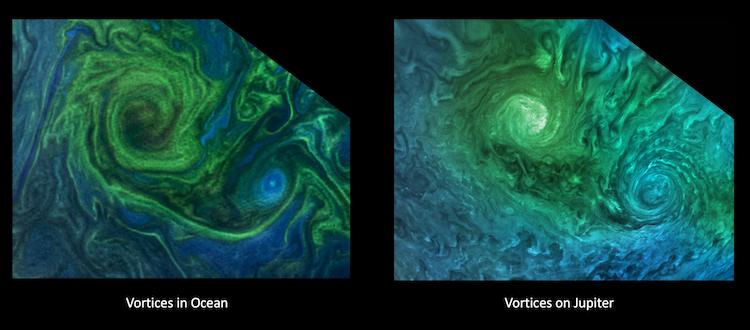
Left to right: A phytoplankton bloom in the Norwegian Sea, and turbulent clouds in Jupiter’s atmosphere. Jupiter images provided by NASA’s Juno spacecraft have given oceanographers the raw materials to study the rich turbulence at the gas giant’s poles and the physical forces that drive large cyclones on Jupiter. (Photo: NASA OBPG OB.DAAC/GSFC/Aqua/MODIS. Image processing: Gerald Eichstadt)
Gaining a deeper understanding of Jupiter's energy system, though it's much larger than ours on Earth, can help us ultimately learn more about what's happening on our own planet.
All these new developments let the public learn just a bit more about what's happening with Juno and make us even more excited for the next way of audio and visual materials.
Listen to this incredible soundscape from Jupiter's largest moon, Ganymede.
h/t: [Mashable]
Related Articles:
Explore Jupiter With Newly Released Images of the Gas Giant Planet
Jupiter’s Moon Europa May Glow in the Dark According to NASA Scientists
Juno Sends Back Photos of Volcanic Activity on Jupiter’s Moon Io
NASA’s Juno Probe Sends Back Incredible Photos of Jupiter’s Swirling Clouds











































































